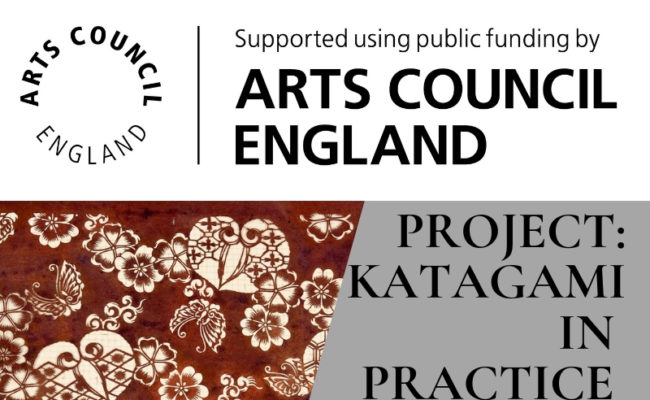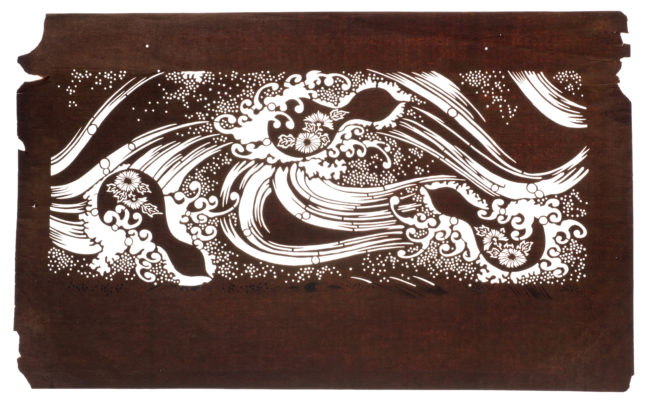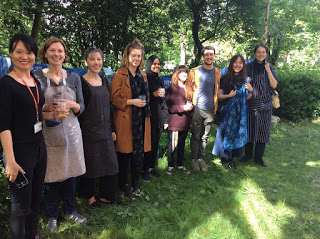‘Ebi’ (Lobster) katagami stencil
Brief description
'Ebi' (Lobster) katagami stencil, 1850 - 1880
Date
1850 - 1880
Dimensions
height: 333mm
width: 412mm
stencil height: 227mm
stencil width: 358mm
More details
The 'Ebi' (Lobster) pattern symbolises longevity. Lobster patterned Kimono were used by the Ichikawa (Kabuki opera) family who adopted the 'Ebi-Kotobuki' (Long life Lobster) as a secondary komon (family crest) from early 18th century (presumably 1703 to about 1930). This Katagami also features a design of carved jagged lines to make it look like woven Ikat, called ‘Urumi gata’ (looks like Kasuri). Kasuri (Ikat) is a woven pattern. This is a style applied to patterns from the late Edo period (1780-1867) to the present. In collections from around 1850 to the Meiji Era (1868-1911) of the Northeastern region of Japan, Urumi gata is often seen. This is one of around 400 Japanese katagami stencils which are part of the Silver Studio Collection. The stencils were produced in Japan as a way of applying patterns to fabric, mainly kimonos. The katagami collected by the Silver Studio were used by their designers as reference material to produce their own Japanese-inspired patterns. There are three methods of silk thread reinforcement in Katagami, 'Itonui', 'Itokake' (a.k.a. Itotsuri) and 'Itoire'. All are reinforcement techniques which phyisically support the pattern and its surroundings with silk threads to maintain pattern shape. This Katagami employed the Itokake technique. 'Itokake' was difficult but primitive; and is said to have been applied to 'Bingata' from the 17th century in Okinawa. Silk thread was passed through the carved open fretwork, linking together the pattern elements so they cannot float out of place. It was used not only in Shiroko, Ise, but also in many another areas of Japan where Katagami was produced in the late Edo period (1780 - 1867).Although Itokake can be indicative of quality, this Katagami is generally of poor quality compared to the standard expected from those of the golden age. The pattern is just a 'stand-alone', not intended to 'tile'; also the paper is thinner and paler in colour indicating it was made after about 1850. Both Itokake and Itoire were used until 1920.





Comments